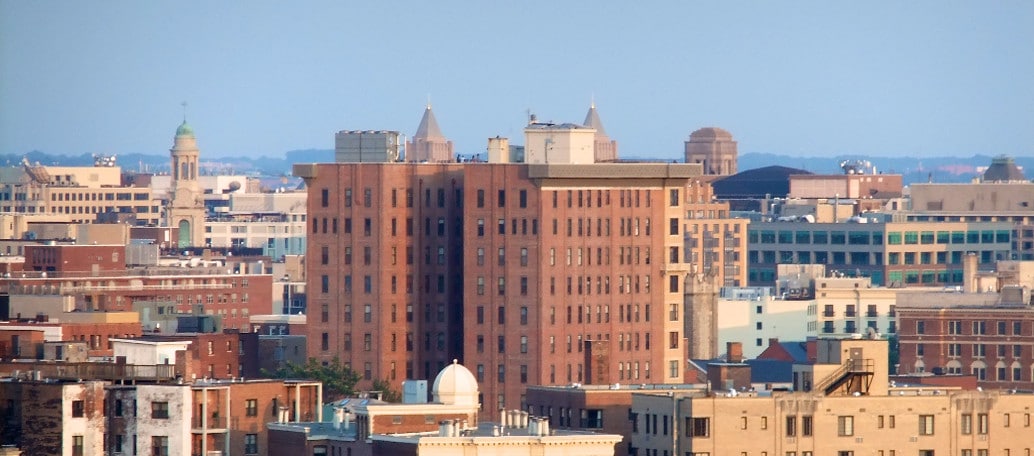The Public Service Commission of the District of Columbia (Commission) has released its Renewable Energy Portfolio Standard (RPS) Report for Compliance Year 2021, an annually required report which highlights the progress that the city is making on its RPS initiatives, with data current through the end of 2021.
According to the report, 2021 saw a significant expansion of RPS-certified solar facilities, despite challenges stemming from the pandemic and other market fluctuations, with a total of 2,337 new solar energy systems approved for the RPS program. D.C.’s RPS electricity suppliers must buy 100% of their power from renewable sources by 2032, with 5% coming from local solar power, meaning systems in the D.C. area.
Of the 2,337 new solar energy systems approved for the RPS program in 2021, 2,077 were located within D.C., with 82 of those systems being community solar installations. Since the RPS system certification program began, regulators have certified 10,013 solar energy systems in D.C., representing 154.7 MW of capacity. Of all systems, 219 are certified community solar installations, up from just 9 in 2018. These community solar facilities contribute 26.5 total MW of capacity.
The report notes a total of 12,955 solar energy systems certified for RPS, amounting to a total capacity of 191.8 MW. With 191.8 MW of certified systems to date, D.C. is actually outpacing the solar procurement requirement outlined in the RPS, which required the city to source 2.5% of its electricity from solar by the end of 2021. According to estimates, that would mean roughly 182 MW of solar would need to be installed by that date, a figure which was surpassed by nearly 10 MW.
A more solar future?
D.C. is home to one of the most aggressive RPS mandates in the country. Utilities operating in the district are required to source 100% of their electricity from renewable energy by 2032, with at least 5% of that power coming from solar energy. Thus 5% figure could grow, however, thanks to some interesting language as to how the solar carve-out operates:
If the solar energy achieved in a given year exceeds the solar energy standard in that year, the solar energy standard of the subsequent year shall increase by one plus the percentage difference between the solar industry standard in that year and the actual percentage of solar achieved for that year, multiplied by the subsequent year’s solar energy standard, provided that the solar energy standard shall not exceed a percentage to equates to a total installed capacity of 1.68 GW.
Noting the hardships that solar faced in 2021, the commission’s report also outlines that growth in solar energy facilities certified for the RPS program continued in the first quarter of 2022, with 720 new systems added, including 42 community solar installations. The report does not project out beyond Q1, 2022, so it is entirely unclear as of yet how the Department of Commerce’s (DOC) investigation into solar cell and module manufacturers in four southeast Asian Countries will factor into 2022 installation totals.
While the DOC investigation has been described as a utility-scale sector killer, the ripples and lack of module availability will be felt throughout the entire industry. As of the Solar Energy Industries Association’s (SEIA) most recent data, the majority of solar companies in D.C. have been reporting delayed or canceled module shipments, with these same companies expecting the investigation to have a severe or devastating impact on their company and ability to do business.
While the full scope is unknown, it is unlikely that 2022 will be the same year for solar RPS progress that 2021 was.
Solar For All
According to the report, one avenue that the commission is looking to use to expand the construction of solar systems throughout the District, is through D.C.’s Solar For All program, a portfolio of projects helping the city reach its 100% renewable energy target by 2032 and cutting utility bills in half for 100,000 low- and moderate-income households.
The program also includes a job training initiative, run by GRIDAlternatives, targeted at preparing the city’s low-income youth for careers in solar. Such social equity goals, while not primary program drivers, are an essential part of Solar For All, according to Tommy Wells, director of the Department of Energy & Environment, as are a focus on innovation and sharing lessons learned on what does and doesn’t work.
This content is protected by copyright and may not be reused. If you want to cooperate with us and would like to reuse some of our content, please contact: editors@pv-magazine.com.









By submitting this form you agree to pv magazine using your data for the purposes of publishing your comment.
Your personal data will only be disclosed or otherwise transmitted to third parties for the purposes of spam filtering or if this is necessary for technical maintenance of the website. Any other transfer to third parties will not take place unless this is justified on the basis of applicable data protection regulations or if pv magazine is legally obliged to do so.
You may revoke this consent at any time with effect for the future, in which case your personal data will be deleted immediately. Otherwise, your data will be deleted if pv magazine has processed your request or the purpose of data storage is fulfilled.
Further information on data privacy can be found in our Data Protection Policy.